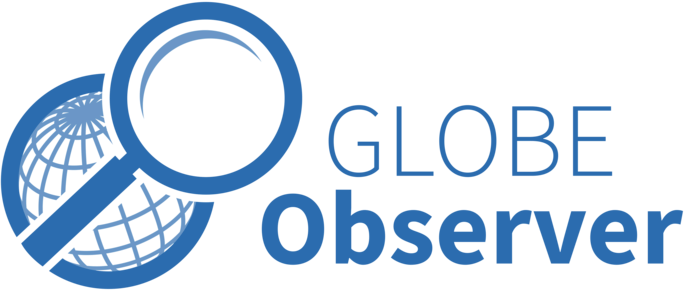Make Observations - Clouds Protocol
How to Record Cloud Observations

What is GLOBE Observer? The GLOBE Observer app provides a new way to make cloud observations using a mobile device. You can also map out Mosquito Habitats, photograph your Land Cover and take Tree height measurements.
 The free GLOBE Observer app (available for iPhones and Android devices) is a step-by-step way to submit cloud observations to NASA. You can quickly take a walk outside, open the app, and follow a set of easy steps to record a cloud measurement. It just takes about five minutes! This video shows you how to make an observation using the app. And...don’t worry about getting the cloud types perfectly, submitting your best answer is what NASA wants!
The free GLOBE Observer app (available for iPhones and Android devices) is a step-by-step way to submit cloud observations to NASA. You can quickly take a walk outside, open the app, and follow a set of easy steps to record a cloud measurement. It just takes about five minutes! This video shows you how to make an observation using the app. And...don’t worry about getting the cloud types perfectly, submitting your best answer is what NASA wants!
The app requires you to create an account using an email address, so it must be downloaded by individuals 13 years of age or older. Adults can supervise the use of the app by younger family members.
Safety First!
- Never look directly at the sun!
- Select a safe location for making sky observations (e.g., away from traffic).
- Always be aware of your surroundings and look around before you look up at the sky.
- Always follow guidelines from your local officials. If it is not safe or you cannot go outside, you can still look at clouds through your window. Keep a journal of what you see!
Questions to Consider as You Observe the Clouds in Your Sky:
- Looking up, what do you see? (Remember to never look directly at the sun.)
- Do you see different shapes of clouds or are they similar?
- What are some words that you might use to describe the different clouds that you see? (Examples: fluffy, puffy, layered, wispy, etc)
- Do some clouds appear to be higher in the sky than others?

- Are some clouds thicker than others?
- Can you see through any of the clouds in your sky? (Example: are they more transparent or more opaque?)
- Do you see what appear to be trails left behind from an airplane? (The trails that are formed as a plane passes over are called contrails.)
- Are some of the trails thicker than others? Do they look like single straight lines or two lines that spread apart? (The three types of contrails are short-lived, persistent non-spreading, and persistent spreading.)
Creating a Science Journal
 In addition to using the GLOBE Observer app to help record and send your observations to NASA, children may want to keep their own record in a science journal. In Elementary GLOBE storybooks, kids write and draw in their science journals as they investigate the world around them. This is a model for how elementary students can use science journals as they make observations of the natural world. Keeping a science journal provides a place for students to record information and helps focus observations of nature.
In addition to using the GLOBE Observer app to help record and send your observations to NASA, children may want to keep their own record in a science journal. In Elementary GLOBE storybooks, kids write and draw in their science journals as they investigate the world around them. This is a model for how elementary students can use science journals as they make observations of the natural world. Keeping a science journal provides a place for students to record information and helps focus observations of nature.
It isn’t necessary to visit a far-off wilderness area to make observations of the Earth system. Observations of the changing seasons, clouds, and the colors of the sky can be made from any place, from a playground or the backyard, a balcony, or just looking outside a window.
Model your thoughts. For example, use sentences that begin:
“This part reminds me of when…”
“I noticed that….”
“I was wondering about ________, but now I understand _______.”
Journal Sentence Starters
Looking at my sky I notice . . .
I wonder why the clouds in my sky appear to . . .
I notice that the clouds in my sky are . . .






